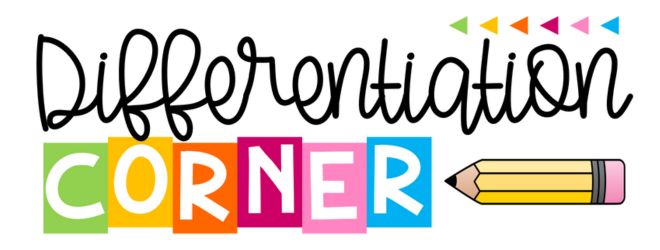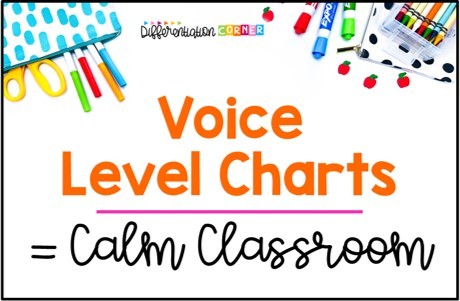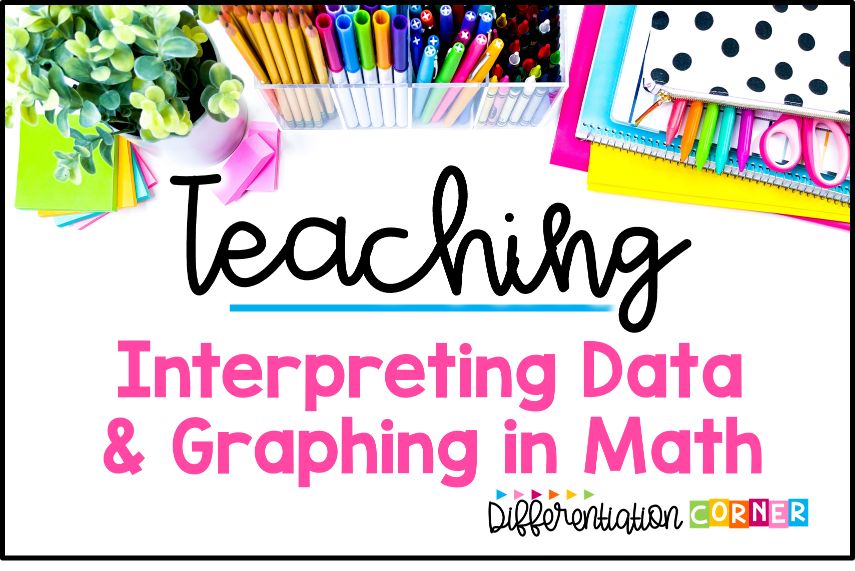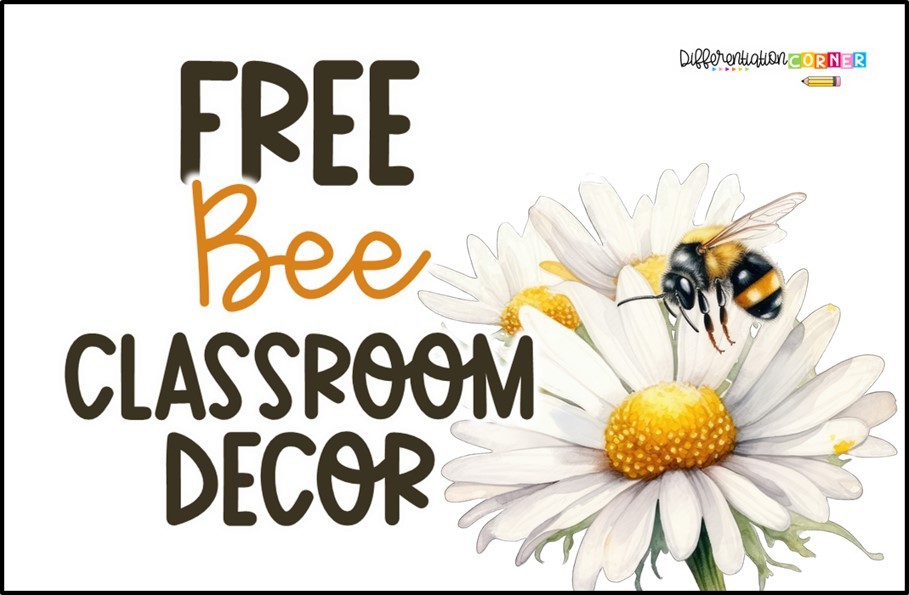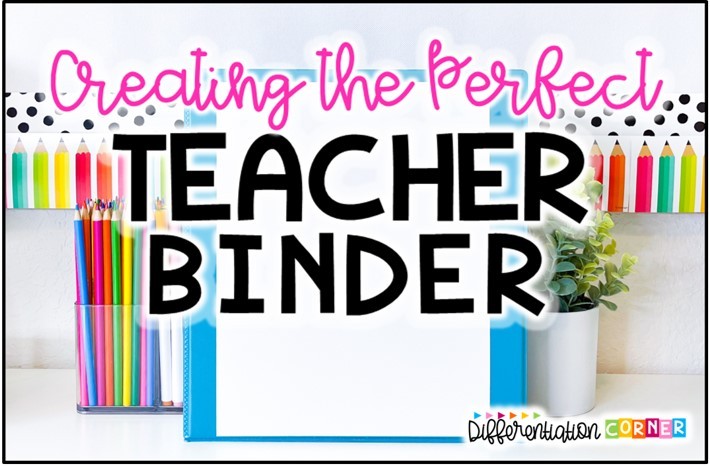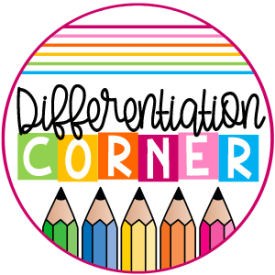Does your class talk non stop? Want to help your chatty class that won’t stop talking stay focused? Along with creating some good classoom rules and expectations, using a voice level chart has really helped me create a positive learning environment.
I had to teach each section of the voice level chart explicitly for it to be effective. But I am SO GLAD that I took that time! The work I put in at the beginning of the year has paid off in the long run, and I want to share how I did it!
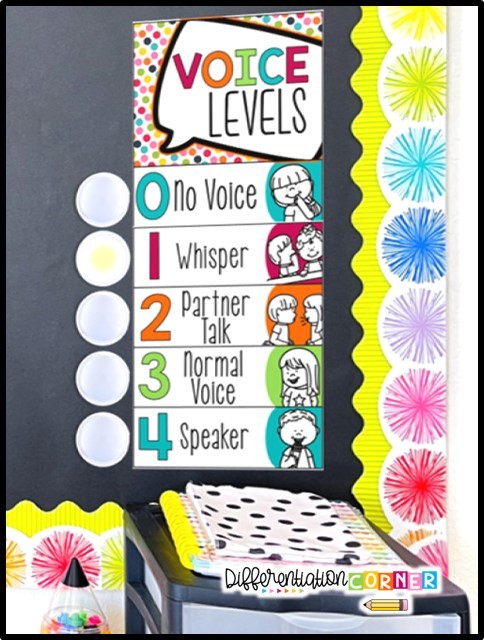
Why You Need a Voice Level Chart
Picture this: instead of shouting over your chaotic class (we’ve all done it!), you’ve got a pretty anchor chart display that silently tells your class: “Hey, we can be cool and still get stuff done without yelling across the room to our bestie.”
This voice level chart is not just about hushing the roaring crowd, it’s about teaching students appropriate classroom behavior and what’s acceptable during specific activities.
Now, imagine the joy of witnessing your class transition from silent independent reading to a bustling brainstorming session without excessive chit chat all thanks to these fun voice level charts.

How to Teach Students to Use a Voice Level Chart
It’s important to teach your class how this voice level chart will be used. Define each voice level by showing what it looks like and sounds like so that students are clear on your expectations.
Voice Level 0: Silent
The silent voice level is reserved for activities that demand complete concentration and independent work. This works great for independent reading time, silent writing tasks, and even assessments.
After I explain these things to students, then we practice what it would look like and sound like. An easy thing to do is to have students grab a free reading book, choose a spot in the room, set the timer for a couple of minutes, and go! After this exercise, talk about what it looked like. Was everyone focused and working? If there was an interruption, talk about how students were distracted an not able to do their best work.
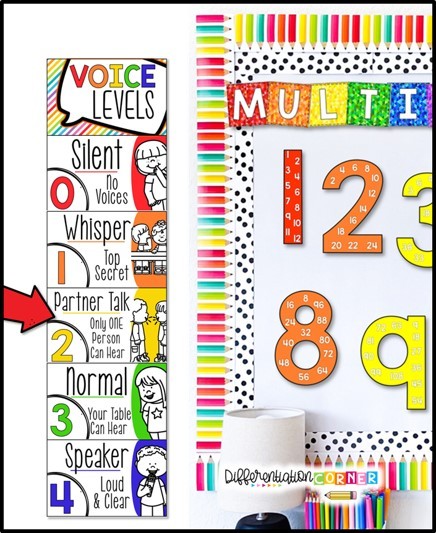
This really helps students to embrace silence during some activities and understand the importance of their personal responsibility to focus. AND it helps create a learning environment with minimal distractions.
Voice Level 1: Whisper
Whisper is the next level on our voice level chart. These charts are editable so you can customize and use terms that your students would find familiar.
This level works well for turn and talk, partner reading time, quick and quiet group discussions, or other collaborative tasks where students need to share ideas without disrupting the entire class. This promotes teamwork AND encourages students to be respectful to the rest of the class by creating a quiet classroom environment.

First, I teach my class what a whisper is. My kids love this part! I have them take two fingers and put it on their throat so they can feel their vocal cords. When we use a talking voice the vocal cords will vibrate. When we whisper, we dont use our vocal cords and you won’t feel them vibrate. After I teach this… there are no excuses for not whispering while we’re on the whisper section of the voice level chart.
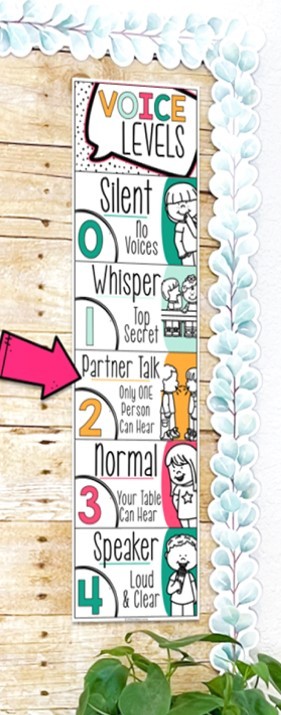
To practice this I will ask a simple question to the half of the class or even just one table group, like “What is your favorite animal?” or “What is your favorite game to play at recess?” Then they turn and talk to their neighbor and use a whisper voice.
I make sure that every table group gets a chance to participate. Afterwards, we talk about what it sounded like. While Jennifer and Jorge whispered, was it quiet enough that the rest of us could keep working? It should be.
Note: You can also use non examples to show kids what each section on the voice level chart DOES NOT sound like. The teacher should be the one acting out the non example. Then have a class discussion how that noise level was not appropriate for that particular class activity.
Voice Level 2: Partner Talk
Partner talk on our voice level chart is just above a whisper or a quiet talking voice. It’s appropriate for activities that require students to work in pairs or very small groups. This voice level encourages communication and collaboration at an appropriate noise level.
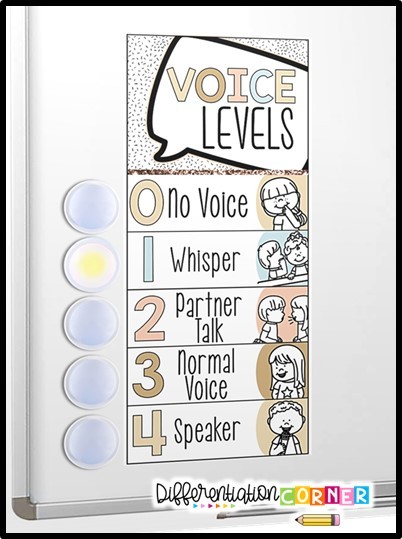
This part on our voice level chart is perfect for math rotations, literacy centers, peer editing during writing, small group discussions, or collaborative problem solving exercises.
To teach partner talk on our voice level chart, I separate the class in half and partner them up. Then I hand each pair of students a math task card. I set the timer for a couple minutes and let them get to work. The other half of the class pays attention to what it looks like and sounds like.
I go and sit with the half of the class that’s observing and point out partner groups that are great examples of the partner talk on our voice level chart. I really try hard to make sure and point out several groups! Then we switch so everyone in the class has a chance to practice and observe.
Voice Level 3: Normal Speaking Voice
The normal speaking voice part of our voice level chart is suitable for most classroom discussions, teacher-student interactions, and group activities. It creates an engaging atmosphere while still maintaining control of our voices.
This part of the voice level chart is great for whole class discussions, interactive class presentations, or group projects where students need to communicate with their peers more openly.
This is the easiest part of the voice level chart to teach! Again I’ll separate the class in half. Then I’ll put them into groups of three or four and tell them to find a spot in the room. This is exactly what I would do for any group work, so this is great practice.
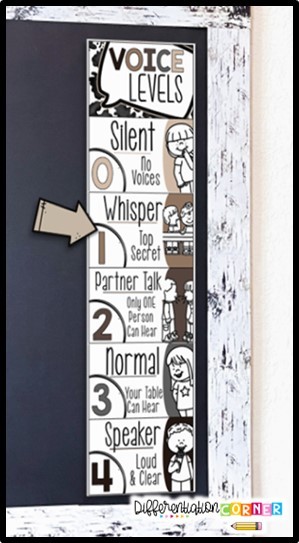
Then I’ll ask them a simple question and have them discuss. Questions I have them discuss could be, “What’s your favorite food and when do you get to eat it?” or “What’s your favorite movie/book and why?”
Voice Level 4: Speaker’s Voice
Speaker’s Voice is the highest level on our voice level chart. This is reserved for situations where students need to address the whole class. This is the least used section of our chart!
We use the speaker’s voice part on our voice level chart for show and tell, presentations, or if students are answering questions or adding their insight during lessons.
Our district uses the common core standards, and speaking and listening is addressed in grades K-12. So teaching this part of our voice level chart means I get to check that box!
To teach this I will ask a few students that I know will enjoy speaking in front of the class. I will have them teach the class something simple, like about their pet, how to solve an addition problem, or maybe even read a couple pages of a familiar picture book.
We talk about how this voice sounds like using a teacher’s voice so that everyone in the class can hear you. We also discuss using complete sentences and making eye contact with the audience.
On the flip side of this we have the listener’s jobs! That’s for another post, but should be taught along with the speaker’s voice on our voice level chart.
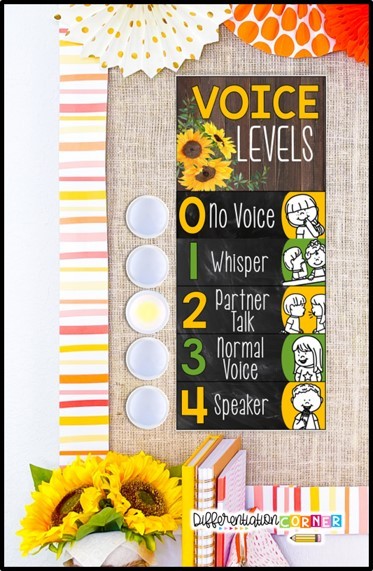
Voice Level Chart Tips for Teachers
- Students will need redirected and retaught after school breaks like winter break and spring break.
- It is worth the time to reteach your expectations while using your voice level chart.
- Consistency is key with voice level charts and any other classroom management strategy.
- Use a voice level chart with visuals like pictures or touch lights.
- Place the voice level chart in a highly visible area for all students.
- Regularly review your expectations, just like you would with classroom rules.
- Celebrate success! Call attention to individual students, partners, groups, or even your whole class when their voice levels are appropriate!
Using a voice level chart is not just about keeping things quiet, it’s about creating a positive learning environment where students know how to be successful. These are perfect for classrooms that are engaging and respectful of all learners!
